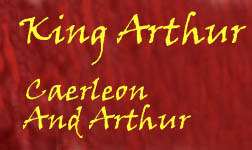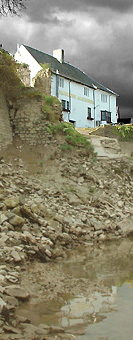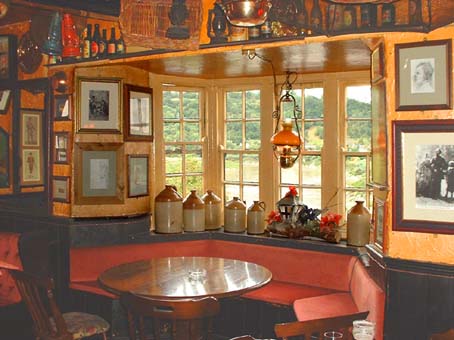Caerleon and King Arthur



In 830AD Nennius wrote Historia Brittonum. It included a list of Arthur's
battles one of which he located at 'The City Of The Legion' - this could well be Caerleon. Caerleon is known to have had a large civilian
population living immediately outside the fortress walls so
it certainly would have been considered as being a city.
It was Geoffrey of Monmouth's writing (1133) that set writers weaving new versions of the legend right across Europe. Monmouth is just twenty miles from Caerleon, and as a historian he must have been impressed by the splendid Roman remains which we know existed then. In his work Historia Regum Britanniae (History of the Kings of Britain) he described how Arthur held court at Caerleon. This, he told us, was attended by many leaders from Britain and areas of Europe under his control. He called this place 'City Of The Legion' (maybe taken from Nennius) but then went on to make it very clear to the reader that he was writing about Caerleon:
"When the feast of Whitsuntide began to draw near, Arthur, who was quite overjoyed by his great success, made up his mind to hold a plenary court at that season and place the crown of the kingdom on his head. He decided too, to summon to this feast the leaders who owed him homage, so that he could celebrate Whitsun with greater reverence and renew the closest pacts of peace with his chieftains. He explained to the members of his court what he was proposing to do and accepted their advice that he should carry out his plan in The City Of The Legions.
Situated as it is in Morgannwg (Glamorgan), on the River Usk, not far from the Severn Sea, in a most pleasant position, and being richer in material wealth than other townships, this city was eminently suitable for such a ceremony. The river which I have named flowed by it on one side, and up this the kings and princes who were to come from across the sea could be carried in a fleet of ships. On the other side, which was flanked by meadows and wooded groves, they had adorned the city with royal palaces, and by the gold-painted gables of its roofs it was a match for Rome."
In another part of his work Geoffrey stated that Caerleon had an archbishop - and from the context we can deduce that this was a man with considerable power and influence:
"After the death of Uther Pendragon, the leaders of the Britons assembled from their various provinces in the town of Silchester and there suggested to Dubricus, the archbishop of the City Of The Legions, that as their King he should crown Arthur, son of Uther. He called the other bishops to him and bestowed the crown of the kingdom upon Arthur. Arthur was a young man only fifteen years old ..."
So in Geoffrey's account Caerleon was an important location even before Arthur (it had an archbishop who crowned the king), it was a splendid place and it was where Arthur held a very important court. Geoffrey does not make any mention of Camelot.
The first occurrence of this placename is in the poetry of Chretien de Troyes written some fifty years after Geoffrey. It is almost inconceivable that the inspiration for this creation was not the Caerleon described by Geoffrey.
Had Arthur made Caerleon his base it is unlikely he would have used the Roman site. This would have been too large to defend. The castle mound inside the Mynde dates from a later time - around 1085 - although there is an interesting story which links this to Arthur. His most likely course of action would have been to re-use the substantial Iron Age hill fort just a short distance away.
While many will argue about the location, even the existence, of Camelot few could disagree that Geoffrey's description of the court held at Caerleon was the inspiration for others to later develop this theme.
It was to Caerleon that Tennyson turned when he was writing Idylls of the King in 1856. He lodged in the Hanbury Arms, where he could look out over the River Usk, and went on long walks through the surrounding countryside to draw inspiration.
Visitors can still sit in 'Tennyson's Window' - here it doesn't take much imagination (or liquid refreshment) to wander back through time ...


Tennyson's Window, in the Hanbury Arms